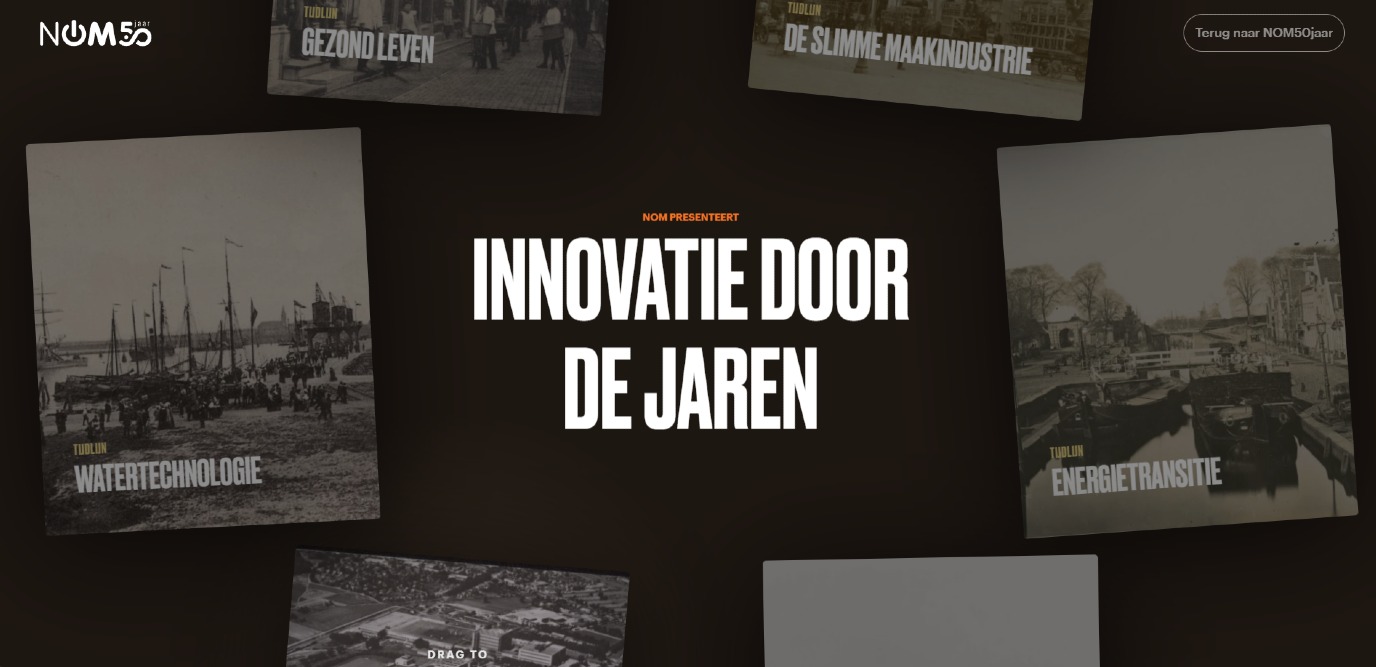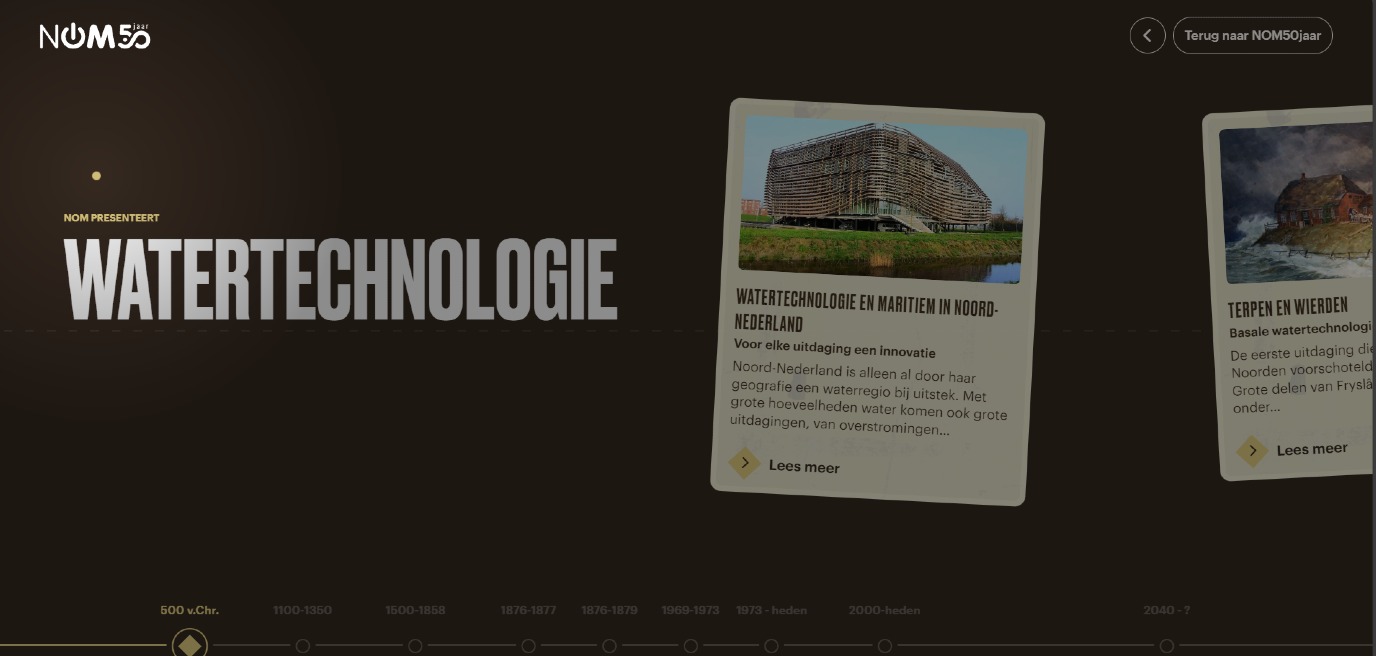Interactive stories about the strength of the North. Past, present, future. | Interview with Prof. Dr. Marijn Molema

Did you know that Willem Albert Scholtens (Groningen) was the founder of the Netherlands' first multinational company? That the popular Batavus bicycles have been made in Heerenveen since 1904? That Groningen was a hotbed for infectious diseases such as the plague, malaria and cholera in the eighteenth and nineteenth centuries? You can find it all on the beautiful interactive timeline on the NOM's website.
In 2024, the Noordelijke OntwikkelingsMaatschappij (NOM, Northern Development Company) will celebrate its 50th anniversary. NOM considers this anniversary as a good opportunity to look back at how it was, be proud of what is there, and continue to build on the future with good courage and confidence.
Interactive timeline
Several things are happening for the anniversary. One is the beautifully designed interactive timeline 'innovation through the years' on the NOM website. This shows the economic history of the North. As you click, you can gain insight into all aspects of the North’s strength in the past, the present - and the future.
The web content aims to show where we excel as a region. How did that come about and how can we strengthen it further? How do we develop a more sustainable, healthier and smarter economy in the Northern Netherlands?
Start of the project
The stories on the timeline were created under the banner of the Rudolf Agricola School for Sustainable Development. Prof Marijn Molema - Special Professor of Regional Vitality & Dynamics - was heavily involved:
'Two years ago NOM's approached the University of Groningen. NOM director Dina Boonstra was already active in the regional development working group as a student. Since then, she has been captivated by the socio-economic history of the northern Netherlands and the issues important to NOM. Hence she came to us with the question 'Can you help us with our anniversary?'
Students, supervised by Molema highlighted six strengths of the Northern economy.
Two study seasons of seminars
Molema: 'That was fun, for two seasons students could work on this assignment during seminars. For me, it was important that our work did not become advertising. NOM fully understood that. It allowed us to be constructively critical in our texts. We link history to the present of the regions in 2040. Historical knowledge gives more self-awareness, where lie your strengths and where are the obstacles. It makes you stronger, heading into the future.'
The raw material for the website was created by economic geography students. They worked on it for two academic years. The students wrote the concepts for the stories under supervision of Prof Aleid Brouwer (Spatial Sciences).
|
Besides the timelines, a so-called longread has also been written about each of the strengths. Whereas the timelines focus on important events and developments that follow one another chronologically, the format of a long article offers the opportunity to work more thematically, and to elaborate broader lines.
For these texts the history students provided the raw material, which Wiek van Gemertand Marijn Molema edited. . These texts are familiar territory for a historian: they may not be as visually appealing as the timelines, but they provide the space to tell the story of the northern economy. |

Own environment
Own environment
Molema: 'Conveniently, prof. Brouwer is connected to the Social Planning Office Groningen and Trendbureau Drenthe, and I to the Planning OfficeFryslan. Students and senior researchers worked on the text and a graphic agency provided the beautiful interactive design and illustrations. Soon there will also be longreads online, written by Wiek van Gemert Msc. He has turned all the chunks into a running story. Wiek is also writing NOM’s history spanning fifty years .
I think the interactive timeline turned out very nicely. And how wonderful that we were able to involve so many young people! During the seminars, they were really able to delve into important moments for our provinces. They also really liked that regional aspect, because usually the study deals with national and international issues, but now it was about their own environment. They also really liked the fact that the results of all their work were actually going to be used.'

| Last modified: | 22 February 2024 11.50 a.m. |
More news
-
24 March 2025
UG 28th in World's Most International Universities 2025 rankings
The University of Groningen has been ranked 28th in the World's Most International Universities 2025 by Times Higher Education. With this, the UG leaves behind institutions such as MIT and Harvard. The 28th place marks an increase of five places: in...
-
05 March 2025
Women in Science
The UG celebrates International Women’s Day with a special photo series: Women in Science.
-
16 December 2024
Jouke de Vries: ‘The University will have to be flexible’
2024 was a festive year for the University of Groningen. In this podcast, Jouke de Vries, the chair of the Executive Board, looks back.

